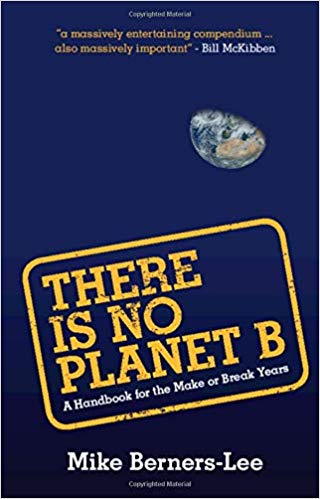This book could not carry a more apposite sub-title unless it would be, ‘Everything You Need to Know about Climate Change but Were Afraid to Ask.’ No cause for any such fear here. This is, both organizationally and substantively, every bit what its author claims it to be, an ‘evidence-based practical guide to the make or break choices we face now.’
Emphasis on the ‘now.’ We live in the Anthropocene age. Our time is the era, very much the first, in which ‘human influence is the dominant source of change in our ecosystem.’ A hundred years ago we could not have entirely ruined our planet ‘even if we’d tried;’ fifty years ago, with the coming of nuclear power, we could have ‘if we made enough big blunders;’ now, ‘if we don’t try hard enough NOT to we will wreck the whole environment.’
The author, a professor in the Institute for Social Futures at Lancaster University and also founder of the associated company Small World Consulting, has published extensively in this area of environmental activism, with books on the carbon footprints of food production and on energy conservation, an examination of the global dynamics of the energy business and of what mix of politics, economics, psychology, and technology would be required to deal with the problem. All his expertise, in both subject matter and presentation, is on display in this new book.
Following the problem and agenda-setting Introduction, the book is divided into nine chapters – which are not so much chapters as subject headings, or a check-list, of crucial areas.
Some of the headings are obvious, such as ‘Energy’ or ‘Travel and Transport.’ Some are not, such as ‘Values, Truth and Trust.’
The presentation in each proceeds in a question-and-answer format, making for easy consultation (just scan the table of contents or the index for the particular question you might have) and for comprehensive coverage. Thus, in ‘Energy,’ there are some two-dozen questions, from the basic ‘How much do we use?’ to ‘Can enough energy ever be enough?’ moving through the critical ‘Should we frack?’ via the seeming whimsical ‘Are biofuels bonkers?’
Some of the answers can go on for pages, supplemented with charts and graphs and the occasional provocative drawing. Such as, under ‘Food,’ where the answer to ‘What happens to the food we grow?’ includes charts of global food production by region and on the disposition of food in its journey from ‘field to stomach;’ and, under ‘More on Climate and the Environment,’ the answer to ‘How much plastic is there in the world,’ is illustrated with a drawing graphically illustrating that ‘if all the world’s discarded plastic were cling film, it would be more than enough to wrap the whole planet.’ Imagine the globe suspended in a baggie.
Following the main body of the book there are four add-on sections which significantly enhance its user-effectiveness.
The first two, ‘Big Picture Summary’ and ‘What can I do? Summary,’ could well be read first, as setting the rhetorical stage for the book’s argument. The third, ‘Appendix: Climate Change Basics,’ is intended specifically to provide, in capsule format, what ‘every politician needs to understand before they are fit for office.’
The fourth section, an ‘Alphabetical Quick Tour,’ provides, in some thirty pages, brief serviceable definitions of every imaginably applicable term, from ‘Animal feed’ to ‘Biodiversity’ to ‘Trickledown,’ while including more than a few surprises, such as ‘Fake news’ or ‘Bullshit’ (‘…examples include attempts to confuse the evidence that climate change is a big deal and the suggestion that Brexit would liberate £350 million per week for the National Health Service’).
Nobody said those concerned with saving our environment can’t have a sense of humor. Finally, the thirty-some pages of end-notes could well be a stand-alone pamphlet, with one informative gem after another leading the reader on to further discoveries.
Throughout, the language is jargon-free and matter-of-fact (purposely non-alarmist), but the simple dire truth is that we’re at a tipping-point. The restorative powers of our planet are being taxed by man’s actions beyond their sustainable capacity. Here, in Mike Berners-Lee’s latest work, we have, in hand, the operational handbook on how to move forward.
This book will satisfy the experts, enlighten the concerned (or merely interested), and motivate the activists.
Mike Berners-Lee There is No Planet B: A Handbook for the Make or Break Years (Cambridge University Press, 2019), pp. xiv, 288 ISBN: 9781108439589
Disclaimers: A review copy of this book was received from the publisher. This site contains affiliate links to products. When you buy something through our retail links, we earn an affiliate commission. This does not impact our reviews and comparisons.

